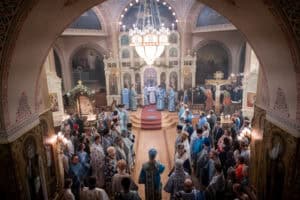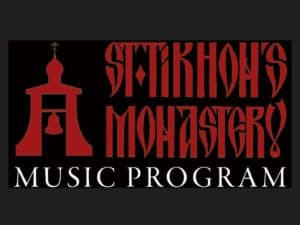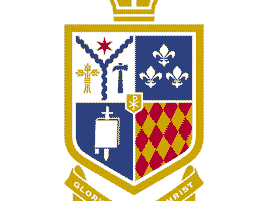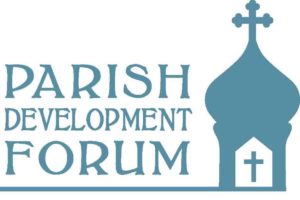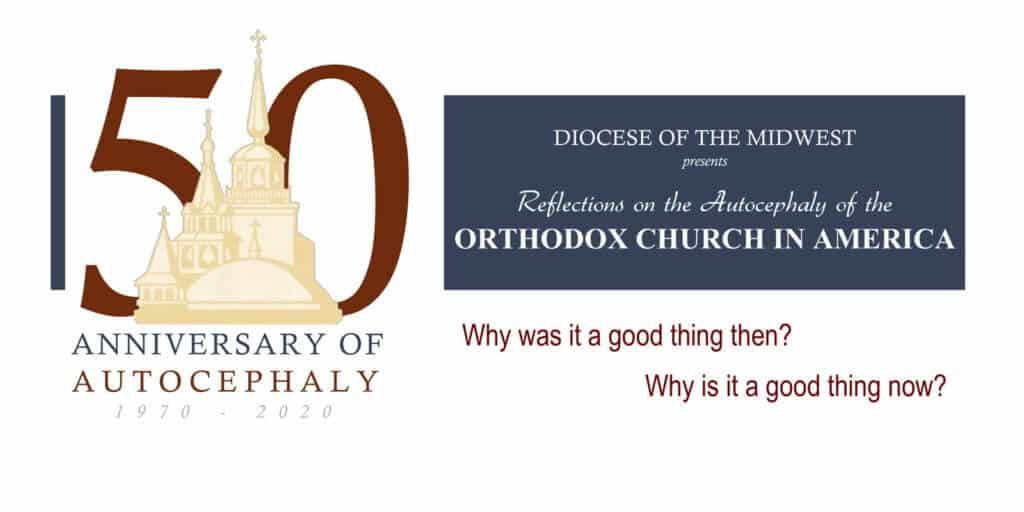
Looking back to the birth of our Church’s autocephaly brings a flood of memories. In the late 1960s and early 70s priests of the Russian Orthodox Greek Catholic Church (the Metropolia) would gather once a year for a summertime retreat at St. Andrew’s Camp on Lake Oneida in Upstate New York. Present at the 1970 retreat were priests who had been part of the official Metropolia delegation which traveled to Moscow to receive the Tomos of autocephaly: Fathers Alexander Schmemann, John Meyendorff, Daniel Hubiak, John Nehrebecki and John Skvir. These men gave the assembled clergy a synopsis of what had transpired in Moscow when the Russian Patriarch presented to our Bishop Theodosius the Tomos.
 The priests mentioned above were a special group, pillars of Church life, pastors and teachers that ‘baby priests,’ such as I was, looked up to as role models. We needed role models, or at least I did, in those days. The American Church was in transition from a highly ethnic community to generations of people familiar only with the mores of the American scene. For example, when I was a seminarian (1965-68) beside the normal course work, three languages were required in order to graduate: Koine Greek, Church Slavonic and Russian. Most Metropolia parishes were using Slavonic as their main liturgical language. The first all-English parishes were located on the fringes of the Metropolia; Encino, CA (founded in 1955) and Dallas, TX (founded in 1954). With rare exceptions, the entire Church used the Julian Calendar to celebrate feast days including The Nativity of Christ.
The priests mentioned above were a special group, pillars of Church life, pastors and teachers that ‘baby priests,’ such as I was, looked up to as role models. We needed role models, or at least I did, in those days. The American Church was in transition from a highly ethnic community to generations of people familiar only with the mores of the American scene. For example, when I was a seminarian (1965-68) beside the normal course work, three languages were required in order to graduate: Koine Greek, Church Slavonic and Russian. Most Metropolia parishes were using Slavonic as their main liturgical language. The first all-English parishes were located on the fringes of the Metropolia; Encino, CA (founded in 1955) and Dallas, TX (founded in 1954). With rare exceptions, the entire Church used the Julian Calendar to celebrate feast days including The Nativity of Christ.
In many parishes there were on-going struggles focusing on clericalism and anti-clericalism. All young priests had heard stories of parish council presidents who demanded to read priest’s sermons before they were delivered in order to make sure they were not in conflict with local sensitivities, of churches where the liturgical schedule was set by parish councils and not the pastor, where priests were ‘not allowed’ to move church tables or candle stands, and the list went on. Young pastors such as I looked up to the established priests who helped settle these questions.
Becoming the local Church on American soil was not an easy task. Enculturation is the slow and occasionally painful process of our Faith Community growing into ‘Americana’ while maintaining true allegiance to the Faith of our Fathers. Considering the life, evolution, and conflicts emanating from the reality of growing into a different way of manifesting our love of Christ and His Church, Father Schmemann said, “they [the conflicts] are the clearest announcement of our future. If together we have gone through darkness and difficulties, if we have survived and grown, it means that the Church has truly permeated our lives, that she has become a reality for us.”
 As a seminarian and recently ordained priest, I was an usher at the 13th All-American Sobor held at the pro-Cathedral in Manhattan. It is noteworthy that only male lay delegates were permitted to attend the Sobors. The sessions were conducted in two languages; Russian and English. Almost all the bishops spoke in Russian and between the clergy and the laity, the ratio was about 60/40, leaning toward English. Father George Benigsen had an incredible gift of doing simultaneous translations from Russian to English and English to Russian.
As a seminarian and recently ordained priest, I was an usher at the 13th All-American Sobor held at the pro-Cathedral in Manhattan. It is noteworthy that only male lay delegates were permitted to attend the Sobors. The sessions were conducted in two languages; Russian and English. Almost all the bishops spoke in Russian and between the clergy and the laity, the ratio was about 60/40, leaning toward English. Father George Benigsen had an incredible gift of doing simultaneous translations from Russian to English and English to Russian.
One of the major points during the three-day Sobor was the fact that the Synod of Bishops had forbidden discussion on changing the name of the Church from the Russian Orthodox Greek Catholic Church of America to “Orthodox Church in America”. This item became a ‘hot button’. Speaker after speaker insisted that a discussion be held on the question. Finally, the bishops allowed a ‘straw vote’ to be held and the result overwhelmingly showed that the body of the Church supported a name change. The people of the Church were not simply suggesting a change in wording, rather they were saying it is time to boldly step into a future that is no longer just a repository of Eastern European peoples, but a Christ centered community of and in America. It was decided to meet again in two years to directly address the question of a permanent name change.
Another issue at the 13th All-American Sobor was a decision to allow parishes, with approval from their diocesan bishop, to adopt the new calendar. My intuition at the time was that the bishops were thinking that if they were asked by parishes to change the liturgical calendar, they would simply say, “no!” I don’t think they realized the deep desire that most people had to participate in a church calendar that was in synchronization with their daily lives.
When my wife and I were taking instructions to become Orthodox, our priest was quite the joker. When he told us the Church celebrated Christmas in January, we truly thought he was joking. On the other hand, for many who grew up with the Julian calendar it was not easy to change. The calendar issue proved to be one of the points of darkness and difficulty that we experienced as a growing missionary church. Eventually, the Holy Synod approved the revised calendar for the entire Orthodox Church in America (with a few exceptions such as the Diocese of Alaska).
I remember my first parish in Rochester, New York. It was established as an all English mission parish, but it came into being during the time when the Julian Calendar was the official calendar of the Metropolia. The parish had a sizeable number of young families with school children and many spouses were converts to the Orthodox Faith. We were experiencing a slow, but steady increase of individuals and families converting to the Faith. Celebrating Christmas on January 7th was a problem. Children were in school, parents were working and for most of the community the joy of the Feast was used up thirteen days earlier. I came up with the idea of celebrating the feast of St. Spyridon (feast day December 12 on the Julian calendar, but December 25th on the revised calendar). We had great attendance on December 25th – January 7th not so much. The Rochester parish was a microcosm of what the entire Metropolia was experiencing.
 The next All-American Sobor, the 14th, was held at St. Tikhon’s Monastery in Pennsylvania; not in two years as decided at the 1967 Sobor, but in three years in 1970. Much had happened in those three years: primarily, the granting of autocephaly to our Church and the formulating of a new Statute to govern the OCA. This meeting was both the last Sobor of the American mission and the first All-American Council of the new autocephalous Orthodox Church in America. I had been in my first parish for two years – truly a ‘baby priest,’ but now I was a part of a new Church blessed by Christ to be His home in America.
The next All-American Sobor, the 14th, was held at St. Tikhon’s Monastery in Pennsylvania; not in two years as decided at the 1967 Sobor, but in three years in 1970. Much had happened in those three years: primarily, the granting of autocephaly to our Church and the formulating of a new Statute to govern the OCA. This meeting was both the last Sobor of the American mission and the first All-American Council of the new autocephalous Orthodox Church in America. I had been in my first parish for two years – truly a ‘baby priest,’ but now I was a part of a new Church blessed by Christ to be His home in America.
One could feel the vibrant atmosphere among the delegates. This was history in the making and we were elated to be a part of the new Church. One thing I noticed was that when the translations were made between Russian and English, Father Benigsen only translated the Russian into English while the English went untranslated. This was a sign that the new Church was placed on this land to be a community that preached Christ in the language of the American people.
The 5th All-American Council was held in Montreal in 1977 and it was truly a watershed for the OCA. Metropolitan Ireney, who ordained me a deacon using Church Slavonic prayers, had resigned due to failing health. Many people thought that another Russian bishop would be elected as the new Metropolitan. However, that was not to be. During the Divine Liturgy before the vote was to be taken as to who would be the next head of the OCA, the service was exclusively in Slavonic. During the singing of the Creed, Father John Skvir gave a very loud pitch and began singing in English and he was joined by the crowded congregation, which over-powered the Cathedral’s Russian choir. This was a sign of things to come.
 Following the Liturgy, on the first ballot, an American convert bishop, Dmitri, received the most votes, but 30 votes shy of the two-thirds needed to become the Metropolitan. On a second ballot, again Bishop Dmitri was first, and Bishop Theodosius, American born, was second. The Holy Synod then selected Theodosius as the new Metropolitan. Theodosius had been consecrated as a bishop ten years earlier and at his consecration he ordained his first priest using English language prayers. I was that newly ordained priest.
Following the Liturgy, on the first ballot, an American convert bishop, Dmitri, received the most votes, but 30 votes shy of the two-thirds needed to become the Metropolitan. On a second ballot, again Bishop Dmitri was first, and Bishop Theodosius, American born, was second. The Holy Synod then selected Theodosius as the new Metropolitan. Theodosius had been consecrated as a bishop ten years earlier and at his consecration he ordained his first priest using English language prayers. I was that newly ordained priest.
Many things have transpired in the past 50 years. The memories are abundant – most are good memories, a few carry the suffering of the Cross, the conflicts and difficulties of growth. The growth began in 1794 with the arrival of Russian monks on American land who proclaimed Christ to the Alaskan natives. In 1906, Saint Tikhon, the former head of the Orthodox Church in the Americas, delivered a report to the Russian Holy Synod connecting the founding of American Orthodoxy in 1794 to what was yet to be in this land. The first Russian missionaries on this continent had a vision. They saw a Church for a new people in a new land, not a mere extension of Russia for Russian people. Saint Tikhon said, “there is no other way for American Orthodoxy than to return to that prophecy and to that vision, to fulfill today that which was given from the very beginning.”


